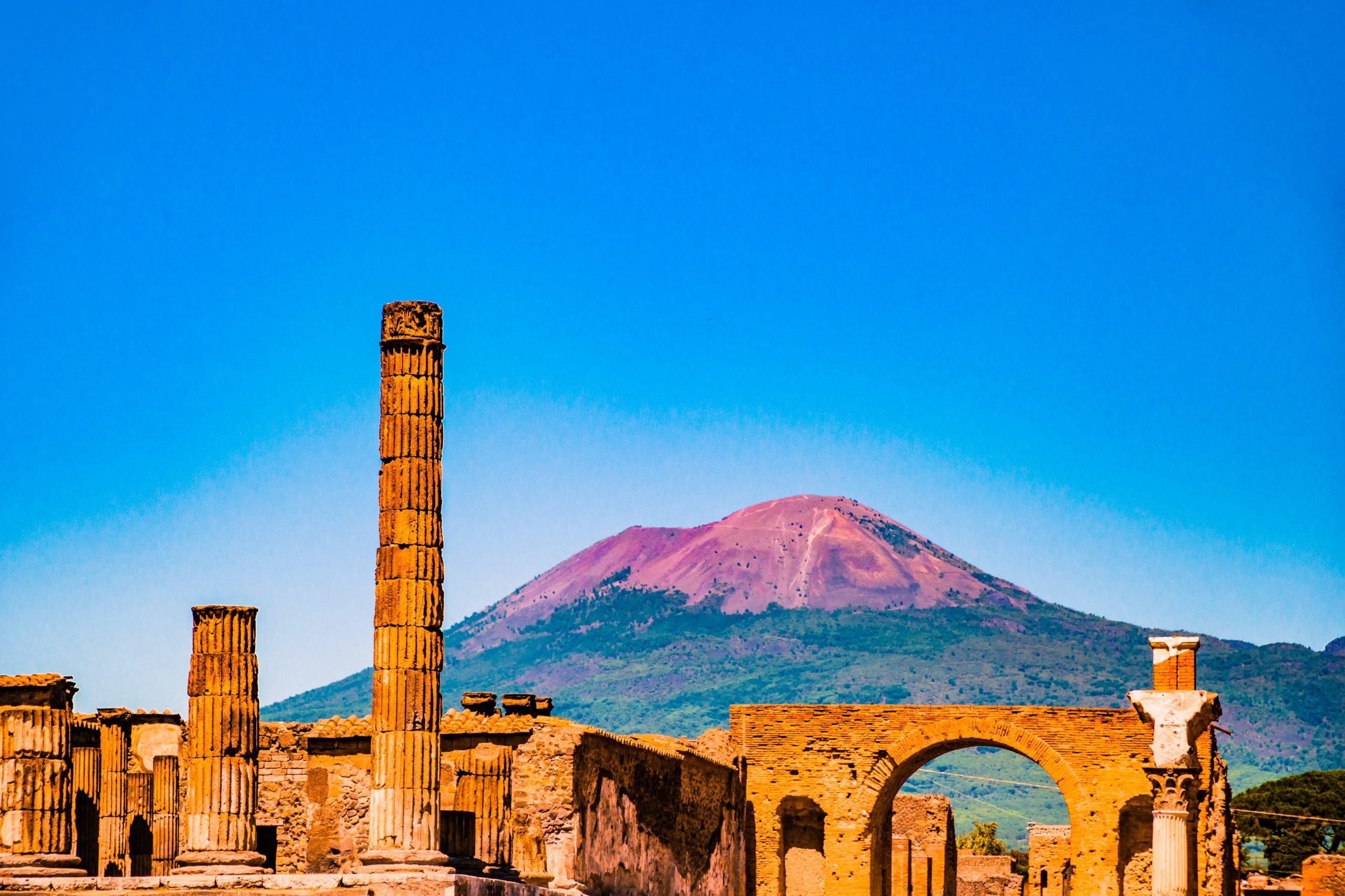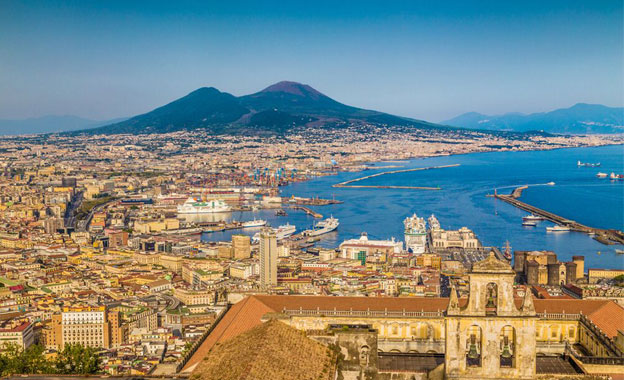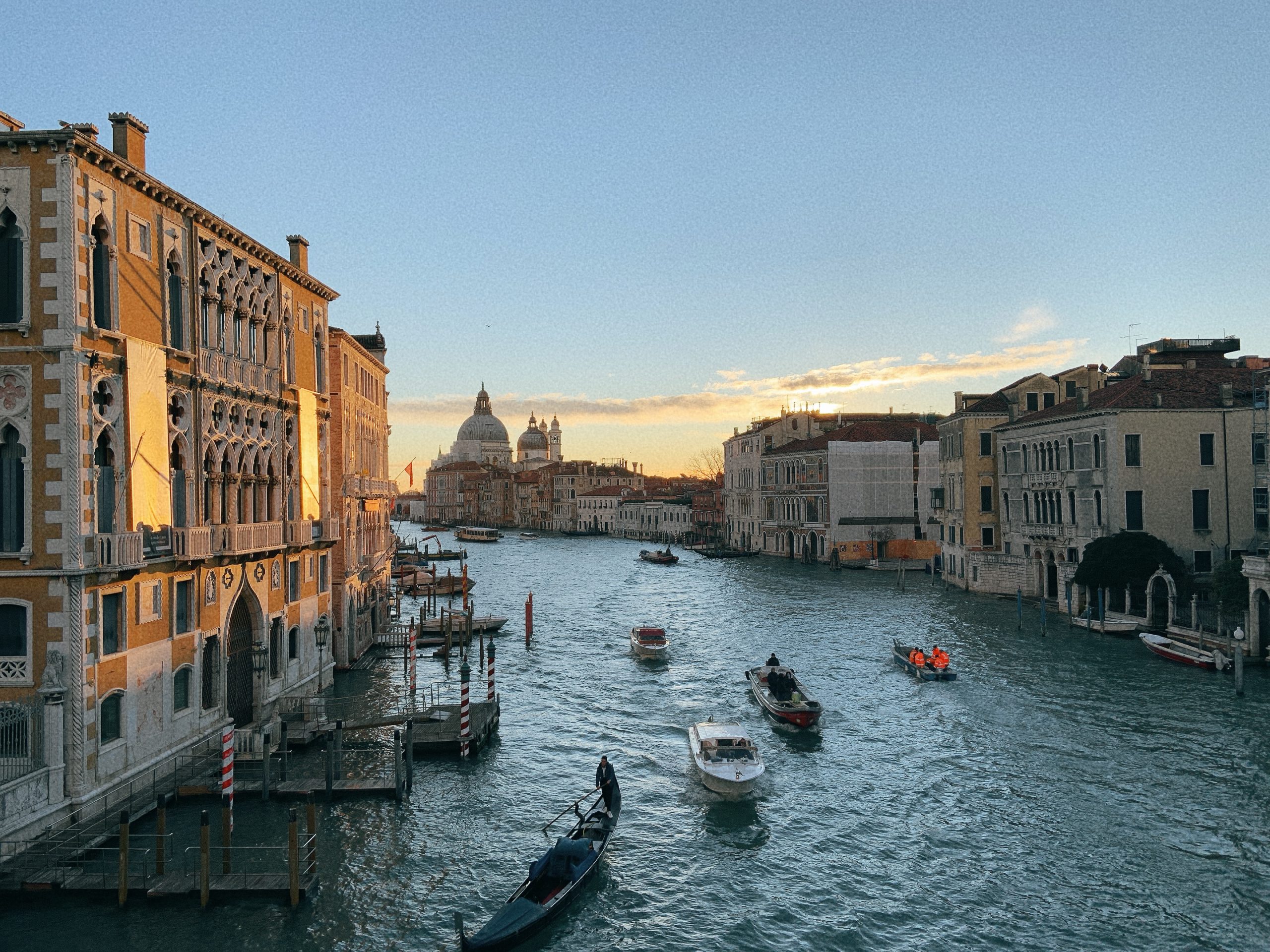
Situated on the Bay of Naples in the southern Italian region of Campania, Pompeii was originally founded by an Italic tribe known as the Osci. Over the following centuries it fell to the Greeks, Etruscans and Samnites, before being incorporated into the Roman world in the 1st century BC.

Neither rich nor poor, Pompeii was a typical middle-class town. To serve its 20,000 residents, the city boasted more than 40 bakeries, 130 bars, and plenty of public baths. Being a port, it also had brothels, restaurants, and entertainment venues that catered to sailors from all over the Roman world — many of whom didn’t speak a single word of Latin. Most of Pompeii’s buildings were covered in brilliant white ground-marble stucco, making it an impressive sight. And from its richly decorated forum, people had a postcard-perfect view of the looming volcano, Mount Vesuvius (on a clear day).

One of the largest private houses in Pompeii, this 2nd-century BCE villa is where some of Pompeii’s most celebrated treasures were found. These include the huge mosaic of Alexander the Great and the Persian king Darius on display in Naples’ Museo Archeologico Nazionale. Another well-preserved villa is the luxurious Casa del Menandro.
Then on October 24, AD 79, everything changed. At about 1 p.m., Vesuvius sent a mushroom cloud of ash, dust, and rocks 12 miles into the sky. It spewed for 18 hours straight, as winds blew the cloud south toward the city. The white-gray ash settled like a heavy snow on Pompeii, its weight eventually collapsing roofs and floors (but leaving walls standing). Though most of Pompeii’s residents fled, 2,000 stayed behind. A bad move, because the next morning a red-hot pyroclastic flow struck Pompeii, dealing a fatal blow to those who had remained, and burying the city under 30 feet of volcanic ash.


After the eruption, people from nearby towns tried in vain to find the buried city. Because Pompeii was a major port, people naturally searched for it near the sea. But the eruption had filled in the harbor and pushed the coastline out, meaning Pompeii now lay inland — and its location would remain a mystery for more than 1,500 years.

Ironically, the ash that had destroyed Pompeii also ensured its preservation, leaving it frozen in time. As a result, its ruins offer the best look anywhere at life in an ancient Roman town, with its gridded street plan, villas and homes, commercial buildings, public baths, and colourful frescoes left remarkably intact.

In 1599, Pompeii was accidentally rediscovered during construction of a canal. Serious excavations began in 1748 and are still ongoing, making Pompeii the longest-continually-excavated site in the world.


Amphorae, terracotta pottery, small and large containers used for the transport and trade in foodstuffs and much more are featured in this exhibit. An immersion amidst the many objects of everyday life and trade at Pompeii. They safeguard the terracotta pottery that was used in the last decades of life in the city for everyday activities, such as pots and stoves used for cooking, as well as jugs, bottles and amphorae – the large containers used to transport oil, wine and fish sauces from across the Mediterranean. Marble tables and basins for fountains which adorned the entrances of the houses are also on display, along with several casts of victims of the eruption.


The Sanctuary of Venus is placed on spectacular artificial terrace that offers great views of the Gulf of Naples, overlooking the bay where the harbour was to be situated. Venus was the patron goddess of Pompeii, to whom the colony was named upon conclusion (80 BC), already worshiped in pre-Roman times and later was patron goddess of sailing.
Anfiteatro

Dating to 70 BCE, the oldest Roman amphitheatre in existence could seat up to 20,000 spectators.
How to get here?

Pompeii is currently open from 9am to 7pm Tuesday to Sunday with last entry at 5:30pm. Tickets cost €16 for adults. Book tickets online at www.ticketone.it or buy directly at the site. Entry is at timed intervals, and you can check online to see which buildings are open.
By Train:
– Piazza Anfiteatro: Circumvesuviana Napoli-Poggiomarino (stop Pompei Santuario).
– Train FS Napoli-Salerno (stop Pompei).
Allow yourself about three hours for a visit. Wear comfortable walking shoes and, in summer, a hat.
A visit to Pompeii is definitely informative and you can spend hours checking out the ruins at this site. Do go with a tour guide who can explain the sites to you, if not you can download audio guides online or Wikitravel which will provide you with essential information as you wander around the huge archeological site, if not it would be hard to make sense of the history behind each site.


